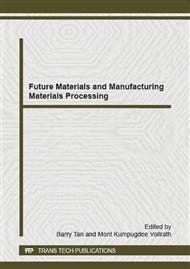p.77
p.83
p.89
p.97
p.103
p.109
p.115
p.119
p.125
Acoustic Emission at the Kinetic and Development of the Structural Defects under Deformation of Aluminum Alloy
Abstract:
The paper presents the results of studies the deformation behavior of aluminium alloy D16 by acoustic emission (AE) method. The purpose of this study was to establish the deformation stages and deformation mechanisms at each stage. Studies were carried out on the samples of aluminum alloy D16 (analog 7075). This paper contains a method for the separation of AE signals. The method of AE sources identification based on the the two-parameter distribution analysis (frequency parameter Kfvs energy of AE signals). The frequency parameter Kf is based on wavelet transform of AE signals. Two-parameter distribution allows one to separate the AE signals emitted by dislocations from the signals of micro cracks. The investigation results allowed the various deformation stages to establish by the different types of AE signals. By the AE analysis shows the dislocation mechanism of hardening the aluminum alloyD16. The paper presents the results that characterize the influences of heat treatment and structural condition of aluminum alloy on the AE parameters.
Info:
Periodical:
Pages:
119-124
Citation:
Online since:
February 2015
Authors:
Keywords:
Price:
Сopyright:
© 2015 Trans Tech Publications Ltd. All Rights Reserved
Share:
Citation:


